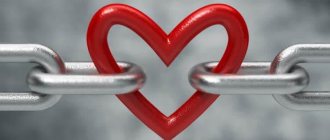Types of attachment in adults
What is attachment? This is a feeling of intimacy based on deep sympathy, love, devotion to someone or something. In the 60s of the last century, psychologists began to study it within the framework of the relationship between a child and parents - the founders of this theory of attachment were John Bowlby and Mary Ainsworth.
However, 20 years after them, in the 1980s, Cindy Hazan and Phillip Shaver decided to apply this concept to adults who are in romantic relationships. They identified four main types of attachment:
- reliable (characterized by the ability to easily form secure relationships);
- anxious (characterized by uncertainty in relationships);
- avoidant-dismissive (characterized by emotional unavailability);
- anxious-avoidant (a combination of anxious and avoidant attachment styles).
Therefore, when it comes to how to remove attachment to a person, the last three models are usually meant, since the first (reliable) is the basis of trusting, healthy and harmonious relationships, and people most often do not want to get rid of it.
It's a different story with the other three, because of which a person can repeatedly fail in trying to start a healthy relationship or be unhappy after entering into one. Below we will talk about how you can change negative attachment patterns to positive ones.
Who attaches special importance to attachments?
The owner of the visual vector needs emotional connections with other people most of all. Frankness and trust in relationships, common interests with friends and walks under the moon at night are the values of the visual vector. A visual person lives for feelings and emotions.
The lives of visual people develop differently: due to trauma and bad experiences, they can forbid themselves to feel, and concentrate all experiences on themselves. And demand attention and love from those around you.
In a healthy attachment, the visual person, on the contrary, shows sympathy and interest in the partner, opens up emotionally and receives a response. If you had to get rid of a healthy attachment, the viewer feels bad, but not fatally. He will come to his senses and create more.
In a dependent attachment, a visual person cannot express his feelings, but instead feeds on those of others. Of course, when the object disappears from sight, you want more emotions. And there is nowhere to take them. It remains to feed on poisoned but sweet experiences from an unfulfilled attachment. It seems that this is suffering from which you want to get rid of, and at the same time sweet torment.
The Key to Reprogramming Your Attachment Pattern
Attachment patterns are fairly stable, and research suggests that about 70-80% of people do not experience significant changes in their attachment style over time. This is great news if you're a secure type, but what if you're one of those whose attachment patterns get in the way of healthy, happy relationships?
Alas, it is not possible to switch from one style to another in one day, but the situation is by no means hopeless. However, before we give you tips on what to do, let's talk about the tool you'll be using. Namely, about the brain.
- FAQs A professional chess player revealed 3 ways to build self-confidence. Take note, this will definitely come in handy.
Have you ever heard that we only use 10% of our brain? Well, that's an obvious lie. Most of the time we use it entirely. What this statement actually means is that a relatively small part of our brain is directly involved in what we think of as conscious information processing.
Most processes in the brain are automated and take place outside of our consciousness. For example, if someone throws a ball at your head, your hand will automatically rise in an attempt to catch or avoid it without having to consciously plan the movement.
Physiological components of emotional systems also operate outside of awareness. Human emotions are, for the most part, governed by an area of the brain called the limbic system.
However, let's not go into anatomy - let's just say that our emotional systems react to incoming data, but do not care about where they come from - from reality or imagination.
Because of this, emotional experiences can be intentionally changed through mental images and your own inner voice from negative to positive. New memories and emotions literally rewire the brain—fortunately, it adapts very easily.
Those connections that you often use are strengthened, and those that are not in demand are cut off and weakened. So, if you're stuck in a cycle of memories of a painful relationship in the past or fantasies of an unhappy love, these circuits will be activated when you try to communicate with a pretty girl, preventing you from getting closer to her.
It's time to reverse this trend by strengthening the positive pathways and weakening the negative, anxiety-producing ones. Repeated positive imaginary experiences combined with positive emotions will create new memories and activate the pleasure centers in your brain.
So, we've sorted out the theory, now let's move on to practice.
Why do we get attached and can’t get rid of it?
A person feels comfortable only when he has good relationships with other people. His mood depends on emotional connections with others. It `s naturally. But the lack of attachments and the inability to empathize is a mental disorder. Attachments are the basis of our lives, but we want to control them: choose the right people, calmly leave those with whom things don’t work out.
Sometimes you can't get rid of it. There are no irreplaceable people, but sometimes we become so attached to a person that it seems that without him life has no meaning. It's better to die than to be alone. And we forget about hundreds of other interesting people with whom we can also communicate with pleasure. And fear also arises: what if nothing works out again? After all, he was so ideal and beautiful, soul and body, there is no other like him. No one else is needed now.
Many people, when they become attached to a person, have the feeling that he is special. Then they get untied and don’t understand what they found in him. It is our imagination, as in fairy tales, that makes a knight out of a shepherd, and a princess out of a washerwoman. There is nothing wrong with painting a beautiful image of the object of affection in your head. But when a person cannot direct his imagination to anything or anyone other than the object of his affection, he becomes emotionally fixated.
You need to realize that it is your emotions that make attachment special. And then what really happened between you may not seem so significant if you look from the outside.
Strong attachment to a person: how to change a minus to a plus
Below are tips from Hal Shorey, Ph.D., who is a professor of clinical psychology at Widener University.
Write positive affirmations on cards.
An affirmation is a short positive statement, such as “I am attractive to girls” or “There are a lot of good people around me.” In the beginning, it doesn't matter whether you believe it or not.
If you're like many people, you've had a constant stream of negative thoughts running through your head for years. These pessimistic “tunes” play in the background like annoying chatter: “I’m a loser,” “All girls are the same,” “Love is suffering.”
- M+F 5 Misconceptions About Love Men Have to Get Rid of Some of them are toxic and unhealthy.
Often when you read cards with positive statements, you simply rewrite this “background music.”
If you don't believe this works, try to remember a time when you had a song from a stupid commercial playing in your head all day, even though you really didn't want to remember it. Has this ever happened? There is only one reason: repetition. Well, it's time to record a new jingle!
Become your own motivational coach
Many of us spend years uncontrollably criticizing ourselves or thinking negatively about others. When you do this, you reinforce negative, anxiety-producing pathways in your brain. Therefore, try to begin to be aware of these moments and stop the negative statements of your inner voice.
Practice telling yourself things like, “I can do this and everything will work out just fine,” “Happiness is just around the corner,” and “Tomorrow will be a great day.” Researchers have found that people who are optimistic about the future use positive self-talk when tackling challenging tasks.
- FAQs How to become an optimist: 10 tips to help you start enjoying life. Useful recommendations on how to change your way of thinking and tune in to the positive.
Learning to talk to yourself as a friend, rather than a subordinate who always gets everything wrong, will help not only change your attachment patterns, but also improve your overall psychological well-being.
Work with the mirror
Be warned, the next task from Dr. Shorey may sound a little strange. He suggests staying alone in a room, looking at yourself in the mirror, straight into your eyes, and saying as sincerely as possible: “I love you.”
As the psychologist recalls, when he did this for the first time, he could not keep a serious face or stop laughing. However, after some time, I began to say this with genuine sincerity and feel completely natural. Try it too!
Remember that your emotional system only accepts incoming data. She doesn't care where they come from. The main thing is that at this moment she recognizes that someone is looking at you and saying: “I love you.”
- Lifestyle How to accept and love yourself: a guide to caring for a cool guy named “you” Why lack of self-love is harmful and advice from psychologists to help you accept and value yourself.
People have a wide range of reactions to this task, and some of Shorey's clients have told him they could never bring themselves to do it. But he suggests looking at the situation this way: if it's pointless and stupid, then why is it so hard for you to do it? We promise we won't tell anyone.
Love saves you from sick attachments
There is no single canon for unsuccessful relationships, but we know what a happy attachment looks like. The feeling of love was described by hundreds of classics of literature. If you are not attached to a person in such a way as to love him, then you should not get hung up on attachment. Love makes a person much happier than any attachment. If you want and dare to fall in love, you will definitely fall in love. And yearning for the object of affection when there is someone to truly love is as strange as waiting for the moon to rise in the light of the sun.
There is a key difference between affection and love. When you are attached, you are afraid to show your feelings, but when you are in love, you show your love with pleasure. Someone suggests starting a new attachment in order to get rid of the old one. This method doesn't work. You cannot completely replace one attachment with another. Only a feeling of love will dispel painful attachment and give strength to live in a new way. Love is an order of magnitude stronger than any attachment.
…Thanks to systemic knowledge, I was able to let go of a long-past but haunting love. In many ways, painful emotional addiction has released its grip, and for the first time in a long time, I feel light, able to love again. There was great tenderness left, and there were no disappointments or resentments left... Diana K., doctor, Tartu, Estonia
...I got rid of a love addiction that lasted for 9 years, and logically I understood that this relationship was futile in any case, but I couldn’t get rid of my incomprehensible feelings... Katya G., assistant manager for working with key accounts, Moscow
The article was written using materials from Yuri Burlan’s online training “System-vector psychology”











